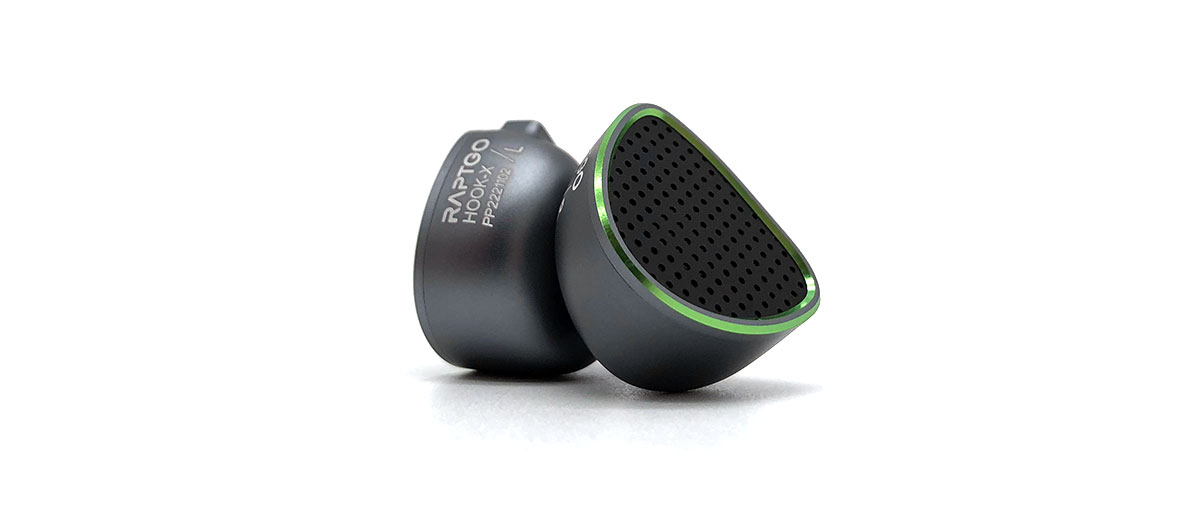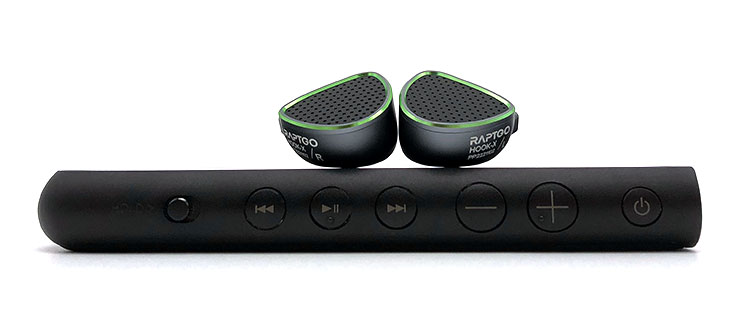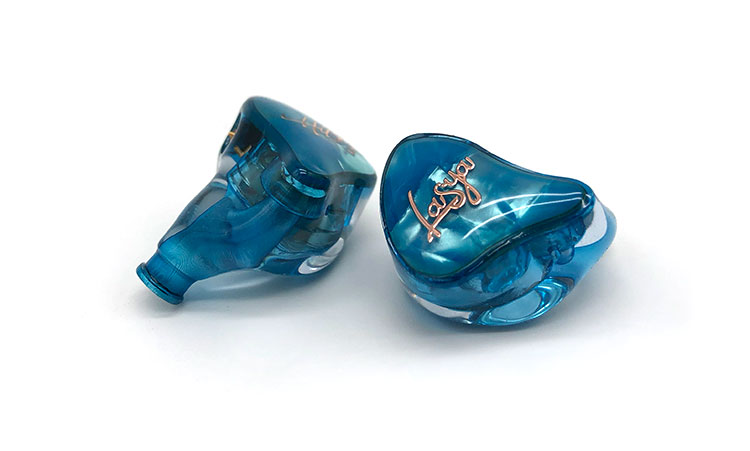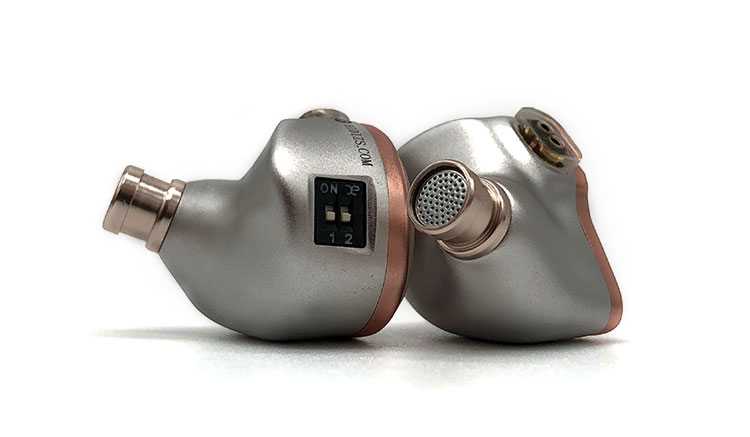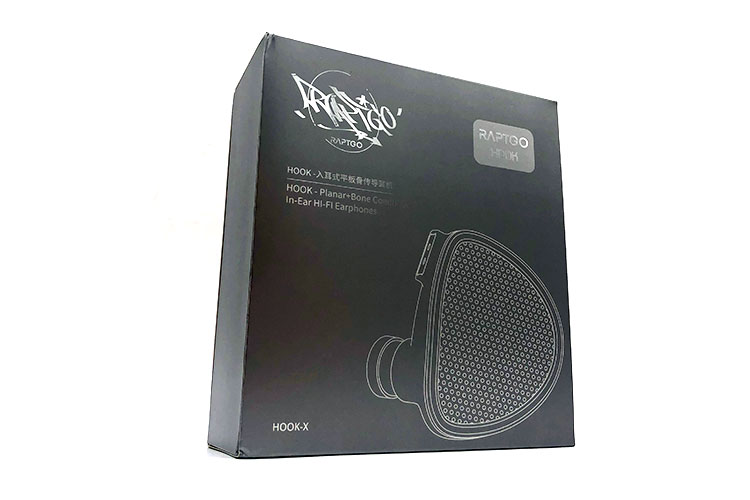Synergy
Efficiency
With an efficiency of 15Ω and 105dB sensitivity, the Hook-X is moderately sensitive though that planar driver seems to enjoy plenty of power.
I was initially using the Hidizs MD4 through the 1.8W capable Topping DX5 and I kept cranking up the volume wheel from -55dB all the way to -48dB once I switched to the Hook-X. Thankfully, it plays well with most amplifiers and is free from low-level noise.
Through the Sony NW-ZX507 DAP, a satisfying listening session leveled around the 50% setting. With my other more efficient monitors, volume is only kept near 40%.
Pairings
For a close to neutral pairing, the DX5 gave the Hook-X a lively and clean persona. The thumping bass and pleasing midrange were left alone only with the slight uptick in treble energy in some cases.
Using the iBasso DX150 for its AKM chip sound, the midrange of the Hook-X got smoother and sweeter while still notably remaining close to what’s natural. And with a consistent punch and vigor in the lower regions, the DX150 tweaked the bass notes with softness and added girth.
Having a cleaner punch and clearer vocal region than the iBasso, the NW-ZX507 warmed up the bass while injecting more room information and air to the rest of the track.
Select Comparisons
HiBy Lasya
$239
Technical
Coming at around the same price tag, the Lasya is only using a single 10mm dynamic driver tuned for silky vocals. The 14.2mm planar driver of the Hook-X on the other hand is especially adept with sub-bass impact in conjunction with the anticipated airier effect on the higher end coming from the PZT drivers.
With very different driver technologies, the two IEMs aren’t just playing opposites internally but are also quite different externally. The Lasya is making use of a more CIEM-styled housing derived from real-world scans of human ears, while the Hook-X appears simpler only prioritizing wearing comfort.
The Lasya is also making use of the more modern Pentaconn Ear sockets for its robustness against wear and tear in comparison to the more common 0.78mm 2-pin sockets in the Hook-X.
Design
The highly transparent epoxy used in forming the shell of the Lasya is very clean and adds more impact to its already unique shape allowing a clear preview of what’s inside.
And while the Hook-X is using a more generic profile, Raptgo isn’t ignorant of its objective as its solid figure is quite comfortable to wear as well.
Where the Hook-X shows its originality is in the faceplate. With a polished spearmint outline and a flat middle filled with holes, Raptgo’s take on a well-performing IEM is with an open-back design, whereas the Lasya stayed with a typical look.
Performance
Even though the heart of the Lasya is in its proficiency in making the vocal range sing, it can be quite fun as well when listening to EDMs. But drier and more honest than the Hook-X, the Lasya’s low-end body and subsequent rumble is nimbler and will play more level with the midrange.
And if the Hook-X possessed a pleasingly laid-back representation, Hiby went for a more resolving take entertaining with its more energetic upper mids. This gives female singers on the Lasya the benefit of shining a bit clearer, airier, and more forward.
Acoustic guitars on the Hook-X are less shimmery and reverberating which is better for those looking for fatigue-free listening but the Lasya is more capable of lifting muted details in comparison.
With horns and cymbals, the Lasya is sprightlier and bigger, but if the treble is not your thing, the boost in energy may sound sharper. Lovers of classical music however will enjoy its thicker and refined tuning, especially with violins.
Where the two significantly diverge is in staging. The wider and even Hook-X creates a more natural environment for sound to play around, compared to the intimate stage depth of the Lasya spreading images more towards the side.
Hidizs MD4
$189
Technical
With four balanced armatures and four customizable tuning profiles, the MD4 has the Hook-X beat if driver count and convenience are your jam. But with a different set of components, the Hook-X may appeal more to those with an interest in trying something more unusual.
The MD4 is using two of its drivers for deep and textured bass, and the other two are each assigned for midrange and treble for a complete frequency range matching the Hook-X.
Design
Against the youthful design of the Hook-X, the MD4 is more mature and elegant. Coming from the brilliant hand-polished celluloid faceplate is an amber-like façade with added charisma formed by the gold logo and rose gold middle frame.
And with both having an aluminum body, leaving either IEMs in a cold room will lower the shell’s temperature which can be surprising when first put on. For the benefit of everyday portability, the MD4’s supplied cable is angled for a more secure fit.
Performance
Surprising with slower thumps, the MD4 lagged in muscle compared to the readily available example on the Hook-X. But as if flipping a switch, strong synth beats are where the crunchier and textured mid-bass region of the MD4 rose to life.
The MD4 conversely rolls off faster in the sub-bass region giving an edge to the Hook-X for a more ideal room-filling sensation, cleaner dispersion, and engaging slam.
Listening to a piano solo, the MD4 is warmer and not as lean making it appear thicker and less echoing. Sharing this trait with the vocal region, timbre is not the most accurate as some singers develop an unexpected tubby nature.
A sudden spike in electric guitar presence is more encircling with the Hook-X due to its taller stage since the MD4 compresses the same energy in a smaller package being less tall. But checking both for proficiency in detail retrieval, the MD4 lost by a few as the Hook-X is better at pulling texture and air versus its smoother profile.
Stage width won’t be a problem with both units with their wide staging performance. Where users may be left wanting more with the MD4 though is in imaging rivaled against the more even distribution of images from left to right with the Hook-X.
Hidizs MM2
$79
Technical
The MM2 may be inexpensive but it’s far from being lazy as Hidizs appeared absolute in applying it with as much tech as their budget allows.
Equivalent to the planar and PZT driver tandem in the Hook-X, a 10.2mm dynamic driver attuned to the enhancement of the bass section is being used plus a 6mm low-voltage magneto-static driver to extend the upper regions. This configuration is putting out a wide frequency range of 20Hz-40kHz, similar to Hook-X.
But if the Hook-X has a trick up its sleeve with its open-back design, the MM2 is making a case for having three removable tuning filters directly punched in its faceplate. This gives users more freedom if the default tuning is not to their liking.
Design
While I like seeing inside electronic devices, the see-through material used in the MM2 is simply not as premium compared with the aluminum-finished Hook-X, somehow informing of their price difference.
But looking at the lozenge-cut faceplate of the MM2, its matte and soft luster shining alongside the alluring brilliance of the screw-on filters is a nice touch on Hidizs’ part. The Hook-X when compared is barer except for the holed black material giving it originality.
Performance
Distinctly more V-shaped, the MM2 is quite aggressive at pushing bass in contrast to the slightly more measured but dynamic-sounding Hook-X. Both do a pretty great job at imparting an engaging slam but the Hook-X edges the MM2 with room definition and speed.
While understandably less detailed, the MM2 is leaning more towards a crystalline rendition of guitars and voices giving it life. I have no problem with either IEM’s tuning, but back-to-back, the more forward midrange of the Hook-X allows for gentler passages to push through better.
Where I would choose the Hook-X is with treble timbre. The MM2’s presentation of violins is skewed and thin especially up against the richer and emotive quality perceived in the Hook-X.
The MM2 can stage out pretty effectively but not as wide as the Hook-X. And although surprisingly close in imaging and placement, the MM2 still ended up less tight and coherent.
Our Verdict
Raptgo most likely knew that the Hook-X will gather a lot of curiosity not just because of its novel concept but also for its charismatic midrange accompanied by a good amount of bass punch and slam.
It is enjoyably easy to use for long listening sessions thanks to the open-back nature of the housing, it could have been a one-hit KO if detail retrieval is improved.
Simply put, this is a high-reaching IEM knowing that this is only their third proper in-ear monitor aimed at audiophiles which only makes it more exciting to see what they can do next.
Raptgo Hook-X Technical Specifications
- Driver: 14.2mm Planar drive + Double-faced 9-layer PZT drive
- Wear Type: In-Ear
- Sensitivity: 105dB SPL/mW
- Frequency Range: 20Hz-40kHz
- Impedance: 15W
- Audio Interface: 0.78mm – 2.5mm/3.5mm/4.4mm
- Earphone cable length: 1.25m

